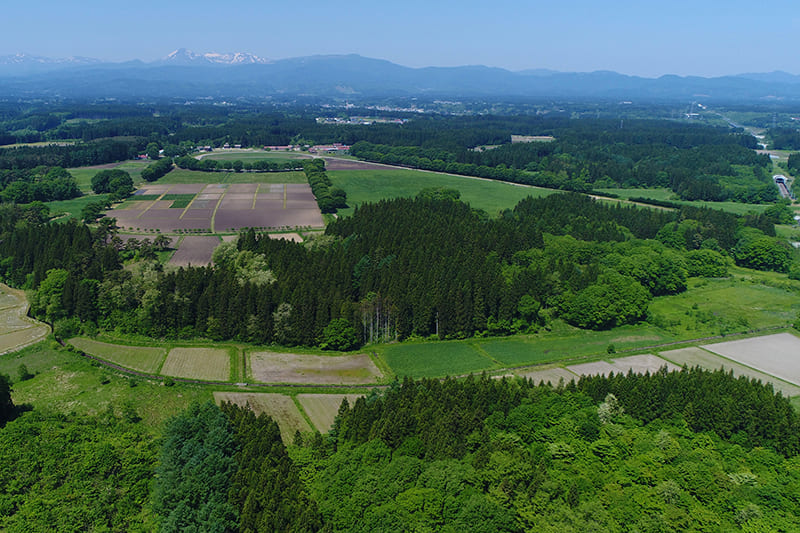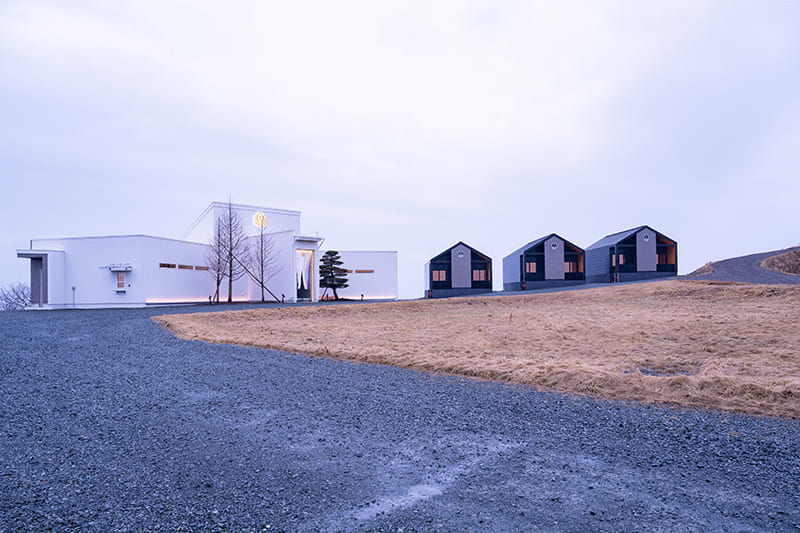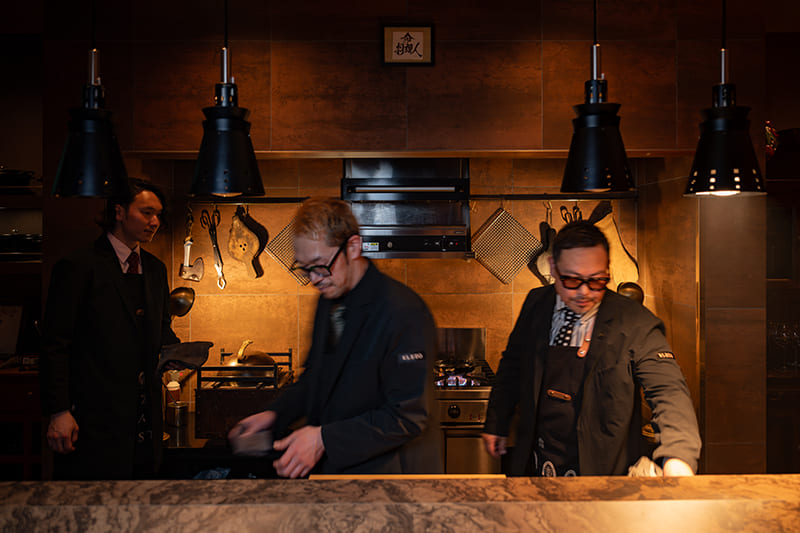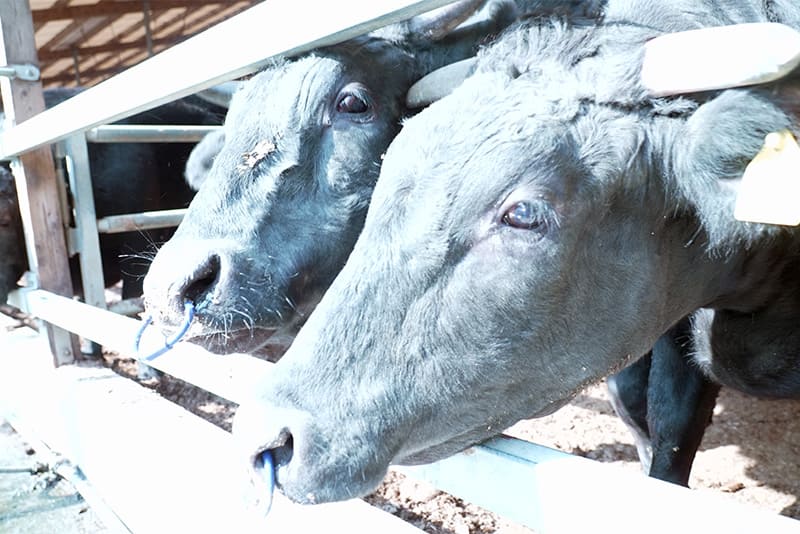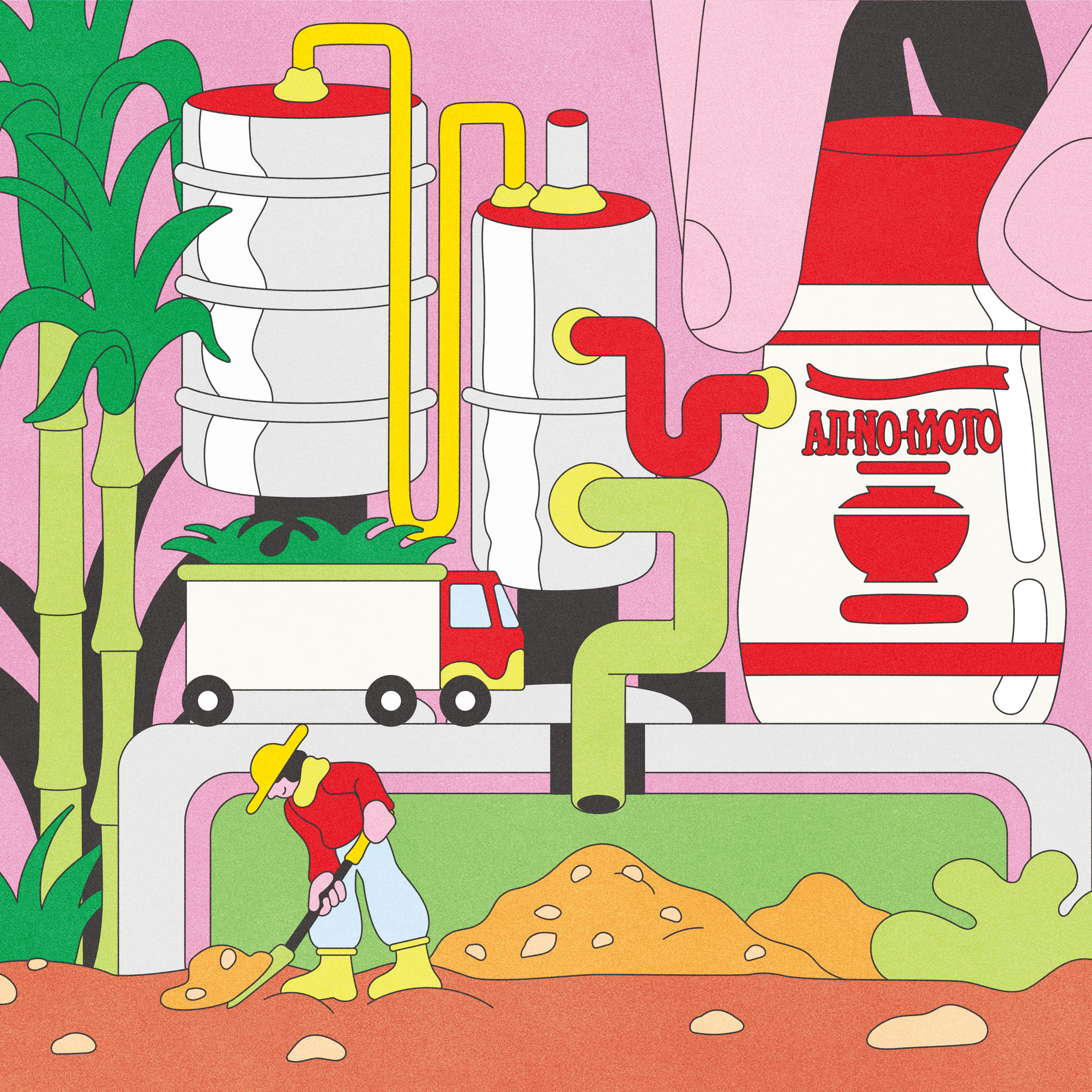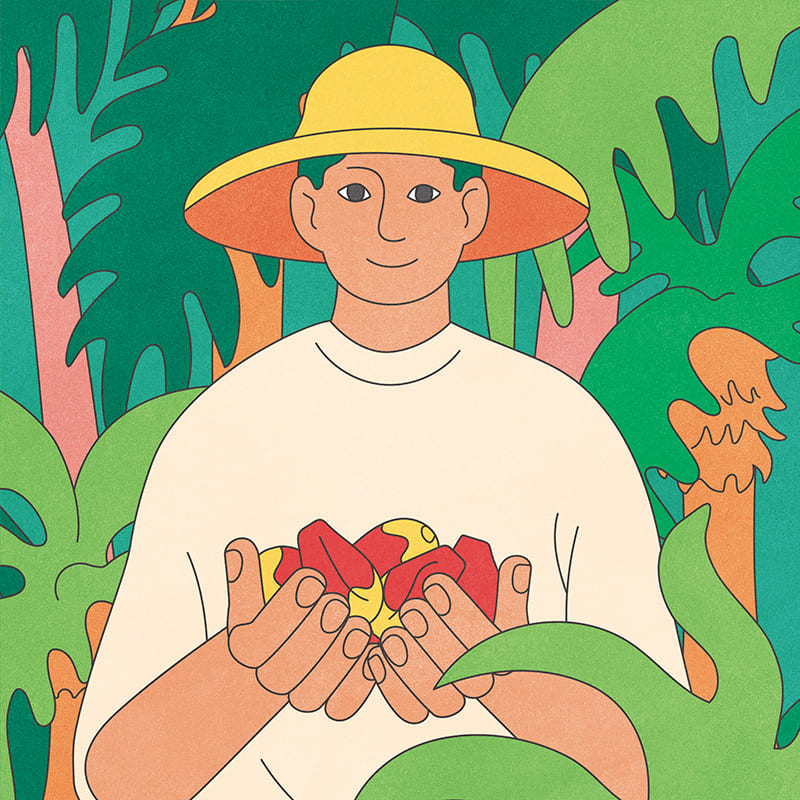January 26, 2024
Raising rice-fed pigs in an era of soaring prices
SATOYAMA CAPITALISM 2024 VOL.4
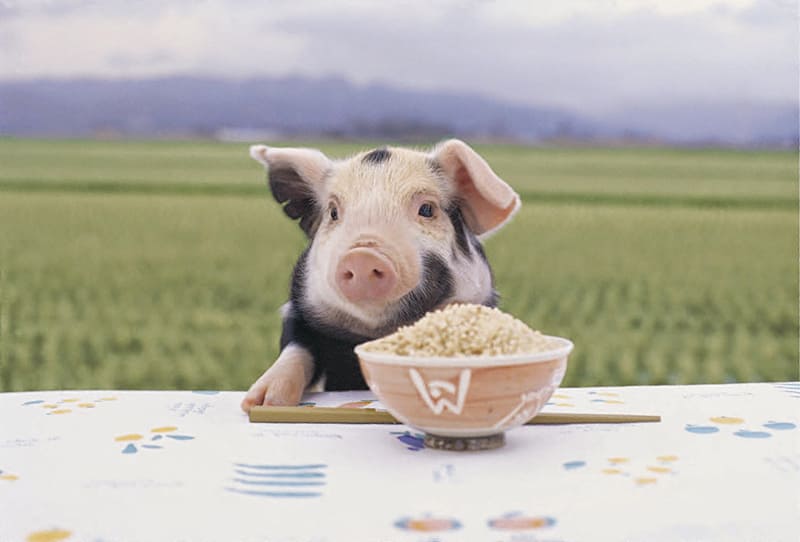
PHOTOS: HIRATA FARMS CO. LTD.
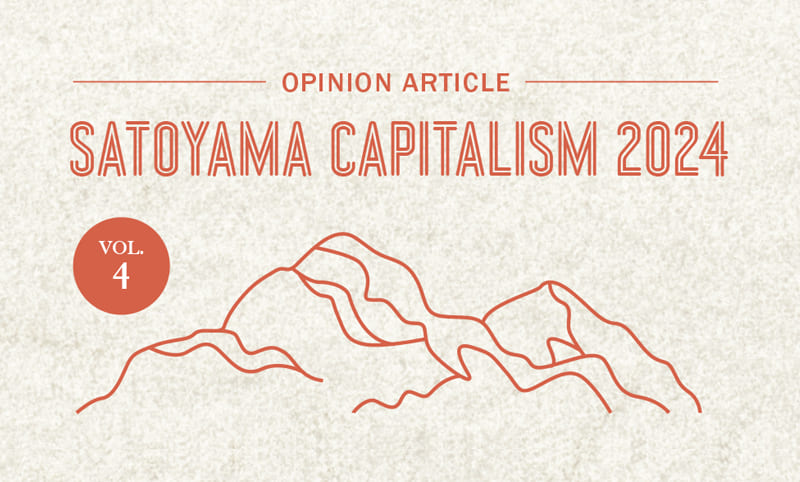
Farmers in Japan are crying out for help as feed prices skyrocket. One man is trying to show them a better way.
Mr. Kashichi Nitta of Hirata Farm is raising pigs along with rice. He is based in Sakata, a Yamagata port town known as one of Japan’s most prolific rice producers. Rice farmers in Yamagata’s Shonai area thrived for centuries thanks to distribution via ship to many areas starting in the Edo Period. Yet now they have been struggling economically for decades.
Mr. Nitta came up with the idea of feeding rice to pigs to restore prosperity to his hometown while looking for solutions to the crisis of high feed prices.
Ever since his father’s generation, he has known something was wrong. When you think of the Shonai plains, you picture a vast landscape of golden rice fields nurtured by generations of farmers. But their success in the postwar era created a problem of overproduction and plummeting rice prices. Government policy asked rice farmers to reduce production in order to protect them. Mr. Nitta thought: “That’s a strange sacrifice. We cannot thrive without producing rice!”
He started his “rice for feed” project in the belief that it would revitalize local rice production and contribute to increasing food self-sufficiency — long a problem for Japan. He had to challenge the laws and convention. The now-defunct Staple Food Control Law, for example, said rice was meant for human consumption. And feeding precious rice to pigs was seen as unthinkable — even unethical.
But he made a great discovery as he moved forward with the project: Rice-fed pigs produce surprisingly tasty meat! It has long been known that ducks that scavenge fallen rice are delicious. No wonder pigs too are tastier when fed rice. Mr. Nitta gradually gained sympathizers and collaborators.
It has been about 15 years since I first met Mr. Nitta when I invited him as a guest on a TV program on the economy I produced. Our families have been friends ever since.
One summer vacation, I took my 2-year-old son on a visit to Mr. Nitta’s pig farm in Sakata. He was very excited to see the pigs through the car window and kept shouting, “bū-bū!” My wife took a video and showed it to Mr. Nitta at dinner. He burst out laughing at the “bū-bū video,’’ offered my son some thin-sliced shabu-shabu meat and lay down on his stomach to chat with him. We’ve got lots of unforgettable memories.
And then, triggered by the war in Ukraine, a huge wave of soaring feed prices hit Japan. I heard that many livestock farmers were suffering doubly from the feed crisis and COVID crisis. I decided to speak with Mr. Nitta and listen to his stories at Hirata Farm.
In January 2023, I landed at Shonai Airport. I headed to a building that used to be a large restaurant in front of a shrine overlooking the Sea of Japan, where Mr. Nitta welcomed us. He had taken on the responsibility of preserving and operating this historic but abandoned building. He also had opened a classic Western-style restaurant in an old European-style building that is very popular with female customers. After tasting the food there, we headed for a tour of the farm.
Its meat-processing center had been handling large numbers of orders due to a sudden hike in pork consumption as many households found themselves forced to cook at home amid the pandemic. At the sausage factory, the factory manager himself guided us, and I was overwhelmed by his skillful and dynamic explanations.
I then sat down in a circle with workers, women of various generations, and listened to them.
One said, “Reports of chaos caused by skyrocketing food prices in Tokyo seem to be stories from a faraway country.’’ Another said: “We could eat pork anytime, but sometimes my kids want instant cup ramen for dinner. It is a must-have item, and the price hike hurts.”
I couldn’t help but pay attention to the words of a woman in her 40s who was in charge of pig feed. She said, “I’m closely following the grain market every day.” According to data from Hirata Farm, in the later stages of fattening Kinka pigs, rice accounted for 45% of the total feed, and with Sangen pork it was 35%. They had to pay close attention to grain prices. That is why they wanted to rapidly raise the proportion of rice feed over the next few years and promote “rice for feed” throughout Japan.
She went on to mention another serious matter. “The summer heat is at a level that can be deadly for pigs,’’ she said with a gloomy face. Hirata Farm is particular about its meat quality, and has protected the purity of the Kinka breed, now very rare even in its original area, China’s Yangtze River basin. Kinka pork has a one-of-a-kind quality, and the pigs weigh around 95 kg. When it is hot, their appetite falls badly. Year by year, climate change is making it harder for pigs, which prefer the same kind of conditions as humans, to survive.
In 2023, intense heat and heavy rains hit Japan. I visited Sakata again before the end of the rainy season. The woman in charge of pig feed told me, “Climate change, soaring food and energy prices, continuing war — I feel like all the news is connected to the suffering of pig farming.’’
“This heat definitely damages our pigs,” she said. “It takes months for them to recover, and by the time they are OK, along comes another hot summer!”
One worker in her 30s said: “Cup ramen used to be a reward for housewives, as it saves time and money. Now it has really become a reward for kids, as it is pricey.” She is in charge of sales to a co-op that has a 50-year relationship with Hirata Farm. She was preparing for a tour from members of the co-op, trying to make sure they kept purchasing Hirata’s pork.
One of the facilities they planned to tour was the newly built Meat Center, where know-how accumulated over many years has been put into action. It is also equipped with the latest innovations. The main feature there is a “heat shield” that thoroughly prevents heat from entering the building. The ceiling, walls and curtains use a special material that Mr. Nitta himself studied and implemented over 10 years. The aim is to create a facility that is resistant to extreme heat, keeping it out with the heat shield, a much different thing from insulation, which keeps heat in.
Soaring food and energy prices, and climate change. How can Japan’s livestock industry cope?
Listening to Mr. Nitta, these female workers and innovators at Hirata Farm renewed my resolve to learn more about and report from the front lines of innovation — the people who care for, nurture and protect pigs.
KYOSUKE INOUE
Writer and TV director. Born in 1964, Inoue joined NHK in 1987 after graduating from the University of Tokyo. For over 30 years, he produced “NHK Special” and other documentaries and authored books. He currently is an adviser to the Sustainable Japan Network, a project of The Japan Times. The series Satoyama Capitalism 2024 will introduce readers to people who live by values other than “money first,” whom he has been covering for many years.
飼料高騰の時代に、米で豚を育てる。
1987年のNHK入局以来30年以上に渡り、ドキュメンタリーを中心に番組制作に関わってきたテレビディレクター/作家の井上恭介による全6回の連載コラムの第四回目。今回は山形県の庄内平野で、「ブタを米で育てる」ということに取り組む〈平田牧場〉の話だ。飼料の急激な値上がりに苦しむ生産者が多い日本で、故郷の水田を再生したい、食料自給率をあげたいと〈平田牧場〉の新田嘉七さんは「飼料米」に挑戦し続けてきた。当初は、「米は人が食べるもの」とする食管法のしばりや、ブタに米を与えるなど「ばちあたり」という感覚などとの闘いだったが、米を与えた豚の肉が驚くほどが美味しく、共感と仲間の輪が広がっていった。〈平田牧場〉によれば、金華豚の肥育後期で、飼料全体に占める「米の割合」は45パーセント。三元豚で35パーセントだという。これでも飼料高騰の影響は大きく、今後米の割合の大幅引き上げを急ぐと同時に、飼料米を日本中にもっと広げていかなければと、井上は語る。
Return to Sustainable Japan Magazine Vol. 32 article list page

